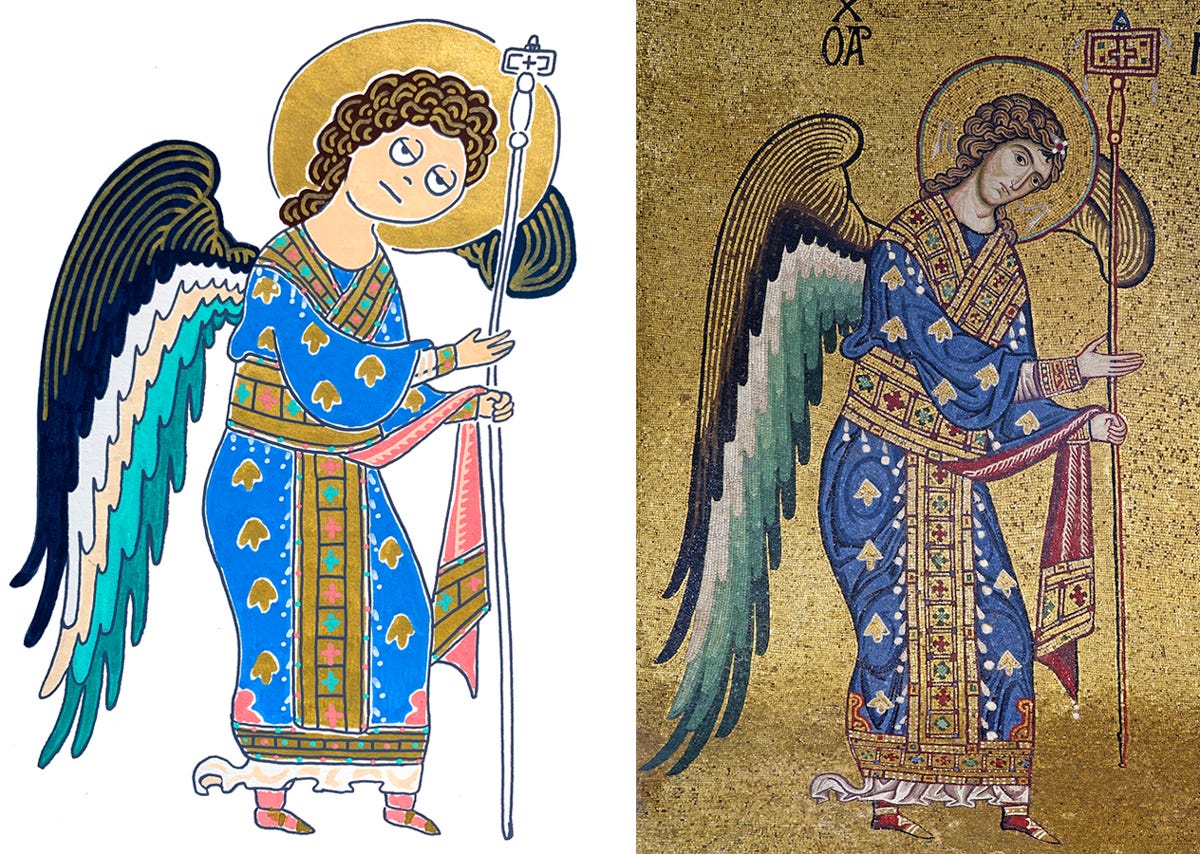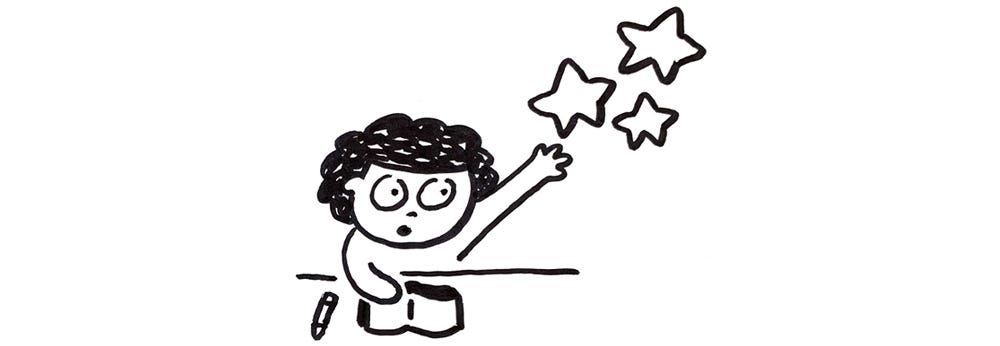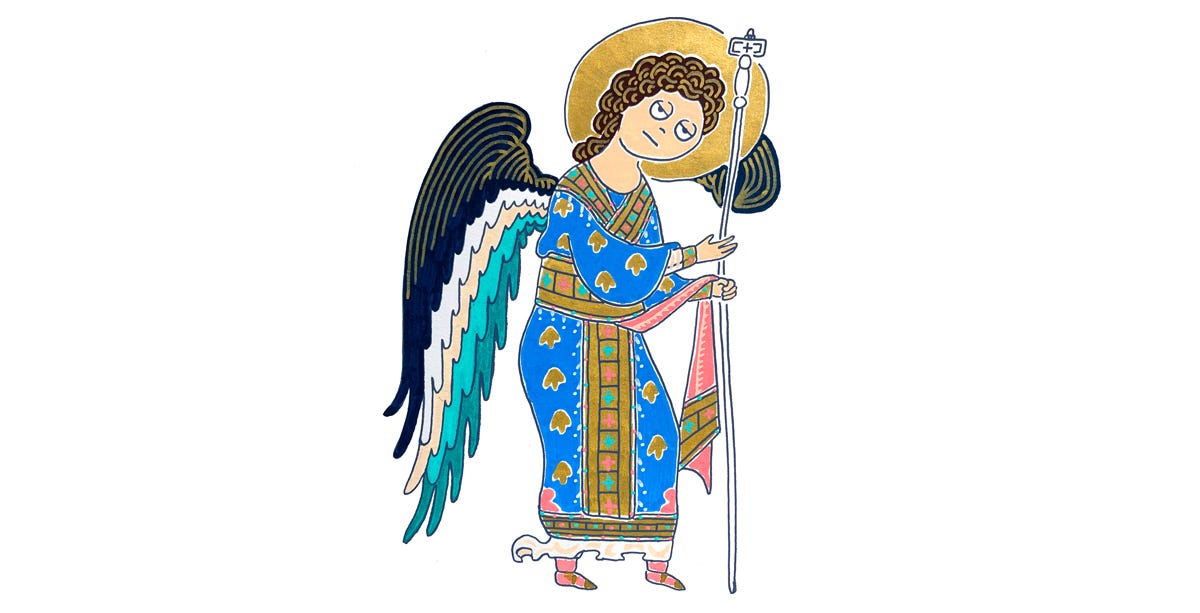The Art of Wisdom: What Art Can Do (That Words Cannot)
A Study of Art in the World's Wisdom Traditions
This is the third installment in my new series, The Art of Wisdom, a study of art from the world’s wisdom traditions.

Over the past few weeks, I’ve made some major headway on where I’m going with this series. I touched on it briefly in the last essay, when I realized that I’m not looking solely for the art of wisdom but also the wisdom of art. Put another way, I’m exploring:
What insights are within the art of the world’s wisdom traditions
How art communicates those insights visually (through images, icons, and symbols)
How visual communication of wisdom is different than verbal communication (through writing, reading, speaking, etc.)
And how we too—you and me—might could tap into that wisdom of art.
So today, I’d like to begin to explore that third bullet—how visual communication differs from verbal.
The Limitation of Words
Language is, of course, a powerful tool of communication, but it has limits. Words—whether written, read, or spoken—were created by humans. We developed letters, words, and syntax so we could communicate the thoughts, experiences, and perspectives up in our heads to other people.
And so, words are limited by that humanness, restricted by our own human perspectives. The divine, however, is beyond human thought and experience. We try to use language to describe this transcendent reality/principle/being (we’ve even given it names: God, Dao, Allah, Brahman, Nirvana), but all those man-made words inevitably fall short of describing something so beyond us.
Theologians have long known that words fail to adequately describe God. That’s why through the millennia, symbolism became so important to religion. Humans developed liturgy, exercises, gestures, and rituals to help us better understand these lacking words and help move us into a mindset more in tune with this deeper dimension.
Those theologians realized that religion is not something you think of and speak of, but something you do. That wisdom cannot be grasped and absorbed by just thinking and talking about it—you have to do it. The writer Karen Armstrong makes the analogy that:
“you cannot learn to dance, paint, or cook by perusing texts or recipes…there are some things that can be learned only by constant, dedicated practice.”
The Expansiveness of Art
But art! Art inherently encourages you—or maybe even requires you—to move into that mindset of deeper existence. Drawing or painting or making any type of art moves us beyond the realm of logical thought. It even, in its most transcendent moments, helps us step outside our whole self and into something bigger than us.
“Art enables us to find ourselves and lose ourselves at the same time.”
― Thomas Merton, Trappist monk
Even if we are not the artist, and we are just viewing another’s piece of work, art can resonate with us at deeper levels than words. Language seeks to describe transcendent reality, but art elicits an experience with it.
George Steiner, a British writer and critic, explains:
“It is decisively the fact that language does have frontiers, that gives proof of a transcendent presence in the fabric of the world. It is just because we can go no further, because speech so marvelously fails us that we experience the certitude of a divine meaning surpassing and unfolding ours.”
Art shows us and leads us into that deeper mode of knowing and being, that exists beyond words and logic. Think of a beautiful, touching song that sparks some feeling inside you and resonates with your emotions. How could we possibly describe in words the powerful feelings music can produce in us? As Steiner says, music is “brimful of meanings which will not translate into logical structures or verbal expression.” Art can communicate some things more deeply than words.
Karen Armstrong has said that,
“All the world faiths insist that true spirituality must be expressed consistently in practical compassion, the ability to feel with the other.”
And it is becoming my belief that art is a brilliant conduit for the expression of and strengthening of compassion. That it can be an excellent method of practice. That, like meditation or prayer, it can be a thing that you do to better understand and absorb the wisdom of any spiritual tradition.
Art it is not simply a way of describing wisdom, which is perhaps impossible, but is instead, a way of allowing you to experience it.
My Own Art Practice
I’ve always been intrigued by religious art, from Christian Byzantine mosaics, to Buddhist thangka paintings, to Islamic calligraphy and geometric patterns. Such beauty! Such elegance! Such emotion and heart and story! What could be more fascinating?
So, it seems that’s where this series is headed. A practice of choosing pieces of art from ancient wisdom traditions that speak to me at that moment and drawing them myself. Spending time with the piece of art, contemplating it, studying it, and recreating it in my own way.
I don’t expect to write much commentary on what exactly the art is trying to say. That would defeat the purpose a bit I think, watering down the wisdom of art with always inadequate words.
Instead, I’ll be aiming to experience these artworks. Through a drawing practice that involves mind, body, and heart. Through a method of deep communication that perhaps only art can elicit. Through enfolding myself (or stepping outside myself?) and entering… well, I don’t know what. Words just fail here.
In spirituality, as in artmaking, you just gotta step out into the unknown and see what happens!
This week’s drawing:
This week’s drawing was based on a mosaic of the Archangel Michael from the 13th century in the Church of Santa Maria dell' Ammiraglio in Palermo, Italy. You can see the original mosaic artwork at the top of this essay or here.
What’s drawing without music?
This week’s artwork was drawn while listening to a playlist created around the song Pingpxng by Yin Yin.
Thanks for reading!
<3,
Christine













This is such a lovely post--you are right the divine cannot be expressed in words and somethings defy words--I was just sharing with a friend that as a writer, I feel lacking in words to capture the vastness of a dark desert sky. In the philosophical tradition of Vedanta, God is divine consciousness. How does one represent that? The symbol "Om" is often used to convey the divine consciousness or the supreme Brahman in Vedanta and Hinduism but consciousness is beyond verbal and visual capture! I love your capture of the Archangel. What made you depict it in this way--more aligned to children's art--for the lack of a better word;-)?
❤️